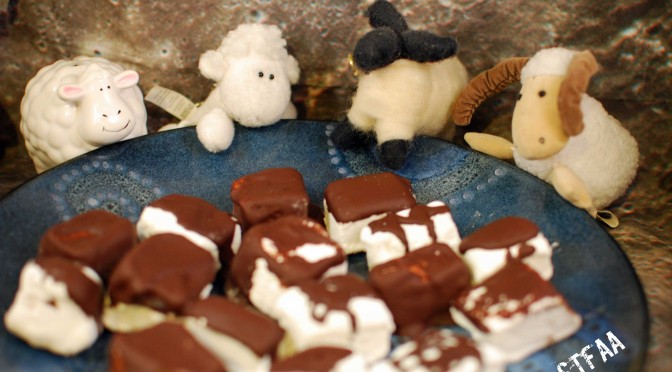
There are two times of the year when I want to eat like the midwesterner I am — dead of winter, and height of summer. And by that, I mean there are two times of the year when I think of meat, first, and then figure out what goes with it. In the summer, I just want to grill things. But in the dead of winter, I want hearty meat and potatoes and veg meals. When I was at the grocery store browsing the meat section, I found some beef short ribs that just looked good — I’d never cooked beef ribs before, nor short ribs of any sort, but trying new things is sort of the point of this blog. So I bought them.
I looked up some things online — a few recipes for beef short ribs in particular, as well as some technique-focused posts on braising. I followed this post for the cooking technique, more or less. And I decided to go with a sort of sweet-and-spicy, braised in the oven beef dish. It was definitely a winner, and this is a perfect mid-winter dinner — it’s hearty and warm and sort of comforting. I highly suggest serving with mashed potatoes, and I added green beans for the vegetable. I’m thinking that bok choy might taste great with the sauce, though.
A note on the sauce — the beef gets just a hint of the spice of the red pepper flakes. The sauce itself, which still contains the actual flakes, is a good deal spicier. Adjust the measurement according to your tastes.
Ideally, use one covered pot or pan that you can do the stove top searing and then the oven braising in — fewer dishes is good for sanity and the environment, plus all the flavor stays together. If you have a Dutch oven, this is the time to use it. As soon as I sort out enough stuff in my storage area to create space to store one, I am buying one. I used my cast iron skillet and covered it tightly with foil as it doesn’t have a lid. This worked great, although I do need to re-season after cooking with an acidic citrus juice for a few hours. It was worth it.

Citrus-spiced Beef Short Ribs
- 1.5 lbs beef short ribs, bone in, separated into individual bones
- salt and pepper to season the ribs
- 1/2 of a medium (baseball-sized) onion, halved and sliced thin (I prefer sweet onions)
- large pinch of salt (probably about 1/8 teaspoon)
- 1 Tablespoon of minced garlic
- 1/2t – 2t crushed red pepper flakes, adjusted to taste
- 1 teaspoon sugar (optional)
- 1 large grapefruit, juiced, with pulp in OR 1 cup of grapefruit juice
- 1.5 inches of ginger, peeled and sliced into rounds
- 2 Tablespoons coconut amino acids, gluten-free tamari, or faux soy sauce
- 1/2 cup warm water
Preheat the oven to 325ºF.
Heat your chosen cooking vessel over medium high heat. If you’re not using a seasoned cast iron pan, brush or spray just a light coat of oil on the pan’s surface.
Season your short ribs with salt and pepper, both sides. When the pan is hot, add the ribs. Sear well on both sides, and I also seared the edges of the few really thick ones. More flavor is always worth the effort. Remove the seared ribs to a plate.
Add the onions with a pinch of salt, and cook until translucent. Then add the garlic and cook, stirring, until starting to turn golden. Add the pepper flakes and stir (but also, stand back and don’t breathe the steam right away!). Scooping all of this to one side of the pan, add the ribs back and then spread the onion-garlic-pepper mix over them.
If using, sprinkle the sugar on the ribs. Scatter the ginger slices, add the coconut aminos, and then add the grapefruit juice and water. Cover your pot or pan, and slide it into the oven. Cook for 2.5 hours.
After removing from the oven, let the dish sit for at least 15 minutes. I then sliced through the thin membrane holding the meat to the bones so I could just serve the meat. Serve topped with the pan sauce, but leave the ginger rounds out.
As the post from The Kitchn suggested, if you find beef ribs to be fatty, you can either trim the fat (not all that highly suggested for this cooking method) OR cook them ahead of time and scoop the fat off the cooled sauce. I didn’t find them to be too greasy or fatty this time around, and enjoyed the richer sauce over mashed potatoes. Your tastes may vary, so know that this is an option.
Enjoy with mashed potatoes and the vegetable of your choice.

























